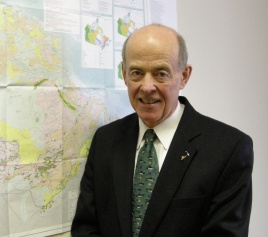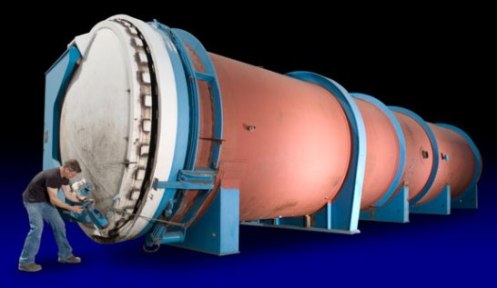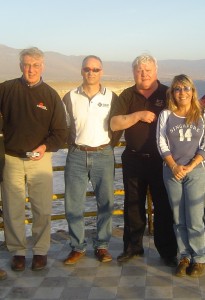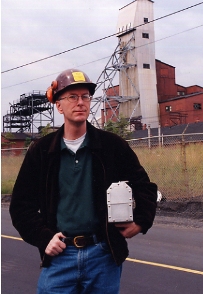 Nickel Was the Most Strategic Metal
Nickel Was the Most Strategic Metal
By anyone’s estimation, the highlight of Sudbury’s social calendar in 1939 was the visit of King George VI and Queen Elizabeth on June 5th, accompanied by Prime Minister Mackenzie King and a host of local dignitaries. This was the first time a reigning British monarch had ever visited Canada, let alone Sudbury, a testimony to the growing importance of the region’s vital nickel mines. The nickel operations in the Sudbury Basin were booming due to growing global tensions and increased spending on military budgets. Sudbury and the northeastern Ontario gold mining centres of Timmins and Kirkland Lake were among the few economic bright spots in a country devastated by the Great Depression.
In an April 15, 1938 article, Maclean’s Magazine journalist Leslie McFarlane described the three mining communities as, “Northern Ontario’s glittering triangle….No communities in all of Canada are busier, none more prosperous. The same golden light shines on each.”
During the royal visit, precedence was broken by allowing Queen Elizabeth the first female ever to go underground at the Frood Mine. Traditionally miners thought women would bring bad luck if they were permitted underground. There were probably many who thought the beginning of the Second World War on September 1, 1939 was the result of her subterranean visit.
The German invasion of Poland was to have dramatic effects on Sudbury. Many communities across Canada, Britain and the United States played exceptional roles in producing certain commodities and munitions for the war effort. However, it would be no exaggeration to say that in North America, Sudbury was among the top few communities that were absolutely critical to the war effort.

























 In 2008, for the first time in human history, more than half of the global population will be living in cities. The planet is undergoing the largest wave of urban growth ever, spearheaded by the massive migration of Chinese farmers to their cities.
In 2008, for the first time in human history, more than half of the global population will be living in cities. The planet is undergoing the largest wave of urban growth ever, spearheaded by the massive migration of Chinese farmers to their cities. Two weeks ago during Toronto’s annual mining convention, a Memorandum of Understanding (MOU) between the Assembly of First Nations (AFN) – Canada’s national organization for Aboriginal people – and the Prospectors and Developers Association of Canada (PDAC) – an industry lobby group – was signed.
Two weeks ago during Toronto’s annual mining convention, a Memorandum of Understanding (MOU) between the Assembly of First Nations (AFN) – Canada’s national organization for Aboriginal people – and the Prospectors and Developers Association of Canada (PDAC) – an industry lobby group – was signed. The annual Prospectors and Developers Association of Canada (PDAC) convention is the premier event in the global exploration and mining sector. The Toronto convention, which is always held in the first week of March, is expected to set another attendance record this year with about 20,000 visitors.
The annual Prospectors and Developers Association of Canada (PDAC) convention is the premier event in the global exploration and mining sector. The Toronto convention, which is always held in the first week of March, is expected to set another attendance record this year with about 20,000 visitors. The Prospectors and Developers Association of Canada (PDAC) promotes the interests of the Canadian mineral exploration sector to ensure that there is an economically prosperous and competitive mining industry in Canada. A critical part of PDAC’s mandate is to encourage the highest standards of technical, environmental, safety and social practices of the industry both in Canada and internationally.
The Prospectors and Developers Association of Canada (PDAC) promotes the interests of the Canadian mineral exploration sector to ensure that there is an economically prosperous and competitive mining industry in Canada. A critical part of PDAC’s mandate is to encourage the highest standards of technical, environmental, safety and social practices of the industry both in Canada and internationally. Sudbury Mining Supply and Service Industry is Enormous
Sudbury Mining Supply and Service Industry is Enormous While southern Ontario manufacturing and auto industries are under severe economic stress due to the high dollar, competition from China and a U.S. recession, Sudbury’s cluster of mining supply and service (MS&S) companies are growing, exporting their products and technical expertise around the world.
While southern Ontario manufacturing and auto industries are under severe economic stress due to the high dollar, competition from China and a U.S. recession, Sudbury’s cluster of mining supply and service (MS&S) companies are growing, exporting their products and technical expertise around the world. There is no doubt that the impending recession in the U.S. is causing economic upheaval across Ontario which exports about 86% of its manufactured goods to our southern neighbour.
There is no doubt that the impending recession in the U.S. is causing economic upheaval across Ontario which exports about 86% of its manufactured goods to our southern neighbour. According to a comprehensive study by the Mining Industry Training and Adjustment Council (MITAC), the Canadian mining industry needs to fill 81,000 high-paying, highly skilled new positions in the next 10 years.
According to a comprehensive study by the Mining Industry Training and Adjustment Council (MITAC), the Canadian mining industry needs to fill 81,000 high-paying, highly skilled new positions in the next 10 years.  I am an Inco brat. I was born and raised in the shadows of those tall industrial smokestacks that tower over the city of Sudbury, Canada. In the days when I turned 18 in the late 1970s, if you didn’t go to university, then it was almost a rite of passage to work for “Mother Inco,” as it was affectionately (or derisively) known.
I am an Inco brat. I was born and raised in the shadows of those tall industrial smokestacks that tower over the city of Sudbury, Canada. In the days when I turned 18 in the late 1970s, if you didn’t go to university, then it was almost a rite of passage to work for “Mother Inco,” as it was affectionately (or derisively) known.